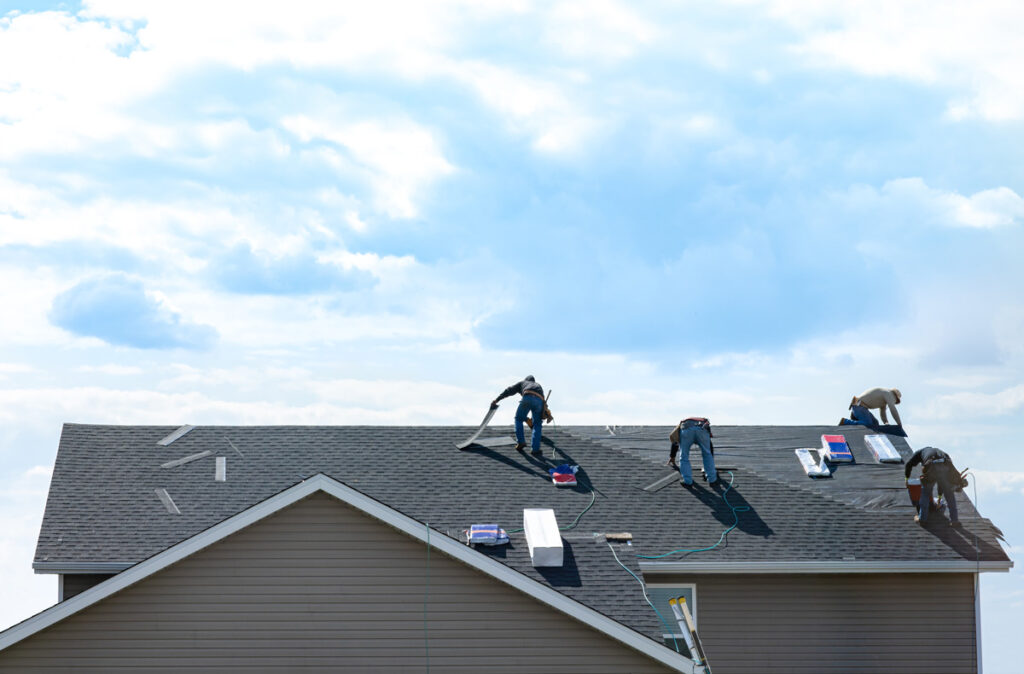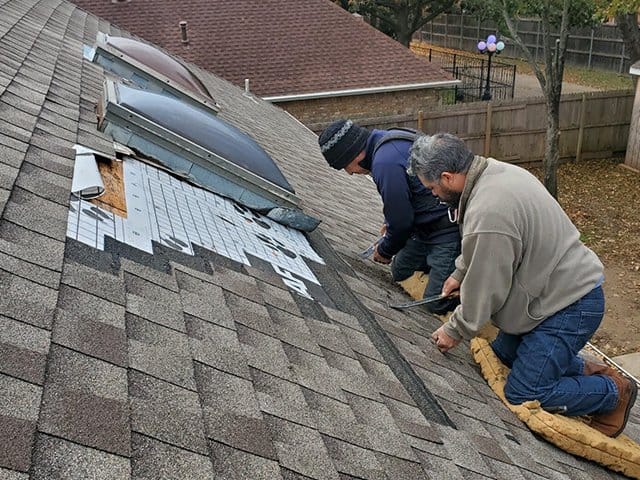Oahu Roofing: Trustworthy Roofing Solutions for Houses and Companies
Oahu Roofing: Trustworthy Roofing Solutions for Houses and Companies
Blog Article
Comprehending the Different Kinds of Roof Coverings: A Comprehensive Overview for Homeowners
In the world of homeownership, picking the ideal roof covering style is a decision that lugs substantial implications for both performance and visual charm. With a range of choices-- ranging from the typical gable to the modern level-- each type provides special advantages and obstacles that need to align with the homeowner's specific demands and ecological considerations. Comprehending these distinctions not just aids in making an educated selection yet likewise affects long-lasting upkeep and energy effectiveness. As we discover the intricacies of numerous roof kinds, it becomes obvious that one size does not fit all; the appropriate choice may stun you.
Saddleback Roof
Saddleback roofs, identified by their triangular form, are amongst the most popular roof covering styles due to their simpleness and effectiveness in shedding water and snow. This style features 2 sloping sides that satisfy at a ridge, permitting reliable water drainage and decreasing the danger of water accumulation. The high pitch commonly linked with gable roofing systems enhances their capacity to deal with hefty rainfall, making them suitable for numerous climates.
In addition to their functional advantages, saddleback roofs supply visual versatility. They can be adapted to various building designs, from traditional to contemporary homes. The layout can likewise fit added functions such as dormer home windows, which enhance natural light and ventilation in the attic room space.
Furthermore, saddleback roofs offer adequate area for insulation, adding to power performance. House owners can pick from a variety of roofing products, consisting of asphalt shingles, metal, and floor tiles, even more improving customization alternatives.
Despite their advantages, saddleback roofs may call for additional support in areas susceptible to high winds or hefty snowfall. Generally, the saddleback roof stays a favored choice as a result of its mix of functionality, toughness, and visual allure.
Apartment Roofs
Flat roofings are usually acknowledged for their minimalist style and useful applications, specifically in business and industrial settings (oahu roofing). These roofing systems feature a nearly straight or straight surface area, which allows for simple building and functional space application. While they might lack the visual allure of pitched roofs, flat roofs offer various advantages, particularly in metropolitan environments where optimizing room is vital
One of the key benefits of flat roofs is their ease of access. Home owners can use the roof area for numerous purposes, such as roof gardens, balconies, or solar panel installations. In addition, level roofs are generally much more cost-effective to set up and preserve compared to their sloped counterparts, as they need fewer products and labor.
However, level roofings do existing specific difficulties. Proper water drainage is necessary to stop water pooling, which can bring about leaks and architectural damage. Therefore, choosing top quality waterproofing products and routine evaluations are essential for guaranteeing durability. Common products used for level roofing systems consist of built-up roof covering (BUR), modified bitumen, and single-ply membranes, each offering distinctive advantages. In general, flat roofing systems act as a versatile and functional selection for several homeowners and organizations alike.
Hip Roof Coverings
Hip roofing systems are identified by their sloped sides that assemble on top, creating a ridge. This layout is distinctive from saddleback roofs, as all four sides of a hip roof incline downwards towards the wall surfaces, offering a more stable structure. The angle of the slopes can vary, permitting flexibility in architectural aesthetic appeals and functionality.
Among the main benefits of hip roof coverings is their capability to withstand heavy winds and unfavorable weather condition conditions. The sloped surfaces allow better water drainage, decreasing the danger of leakages and water damage. In addition, hip roofs supply boosted attic room room, which can be utilized for storage space or perhaps converted right into comfortable areas.
Nonetheless, creating a hip roof covering can be a lot more complex and expensive than easier roofing types, such as saddleback roofs. The added product and labor involved in creating the slopes and making certain proper architectural honesty can result in greater costs. Regardless of these disadvantages, several house owners favor hip roofings for their sturdiness, aesthetic appeal, and potential for power effectiveness.
Mansard Roofing Systems
Mansard roof coverings, often acknowledged by their special four-sided design, feature 2 inclines on each side, with click for info the lower slope being steeper than the upper. This architectural design, originating from France in the 17th century, is not only aesthetically enticing but functional, as it takes full advantage of the usable room in the top floorings of a building. The steep reduced incline permits for even more clearance, making it an ideal choice for lofts or attic rooms, which can be converted right into living rooms.
Mansard roof coverings are identified by their versatility, accommodating different building designs, from standard to modern. They can be built with different products, consisting of asphalt roof shingles, slate, or steel, providing homeowners with a series of choices to fit their budgets and preferences. Additionally, the design enables the combination of dormer home windows, enhancing site here natural light and ventilation in the top levels.
Nevertheless, it is essential to think about the prospective downsides. Mansard roofs may call for even more maintenance as a result of the intricacy of their style, and their high inclines can be challenging for snow and rain drainage. On the whole, mansard roofings combine sophistication with practicality, making them a popular selection among property owners looking for distinctive architectural features.
Dropped Roofs
As house owners progressively look for simpleness and functionality in their architectural layouts, shed roof coverings have actually emerged as a popular selection. Defined by a solitary sloping aircraft, a shed roof covering presents a minimal visual that complements different home styles, from contemporary to rustic.
One of the primary benefits of a shed roofing is its uncomplicated building, which often equates to decrease labor and material costs. This style permits effective water drain, minimizing the danger of leaks and water damage. Furthermore, the upright slope offers ample area for skylights, boosting natural light within the inside.
Dropped roofing systems likewise offer flexibility in regards to usage. They can be effectively incorporated right into enhancements, garages, or outside frameworks like sheds and structures. Furthermore, this roof covering useful reference style can suit various roofing products, including metal, asphalt shingles, or also green roof coverings, aligning with eco-friendly initiatives.
Nevertheless, it is vital to take into consideration regional climate problems, as hefty snow lots may demand modifications to the roof's angle or framework. Generally, dropped roofings present a useful and cosmetically pleasing alternative for homeowners looking to make best use of capability without jeopardizing style.
Final Thought


Gable roofs, identified by their triangular shape, are among the most prominent roof covering designs due to their simpleness and efficiency in losing water and snow. oahu roofing. The steep pitch generally linked with gable roofing systems boosts their capacity to handle heavy rainfall, making them ideal for various environments
While they might lack the aesthetic charm of pitched roofing systems, flat roof coverings provide many benefits, especially in city atmospheres where taking full advantage of room is essential.

Report this page